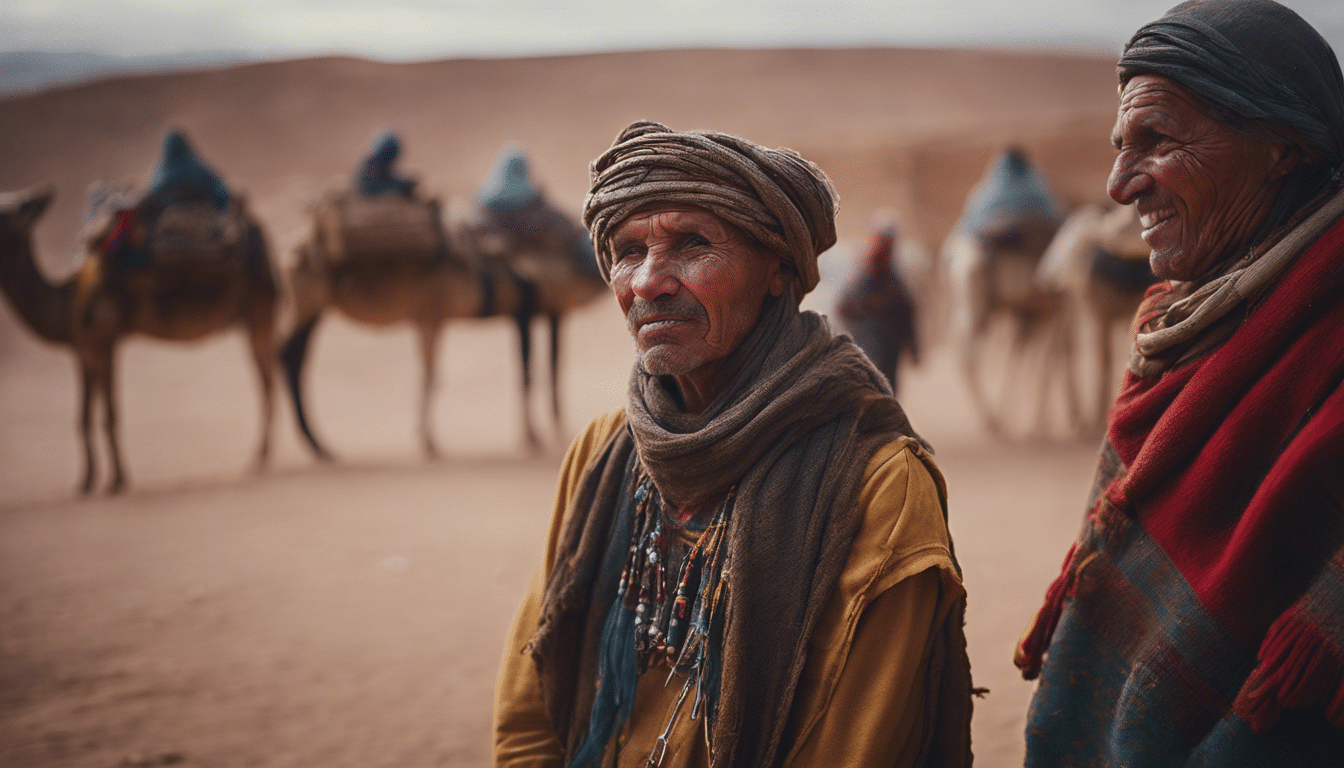The Berber People: History, Culture, and Traditions
The Berbers, also known as the Amazigh, are the indigenous people of North Africa, with a history and culture that stretches back thousands of years. They have played a significant role in shaping the cultural and historical landscape of the region, particularly in Morocco, where they continue to live and thrive today. The Berber people have their own unique language, traditions, and way of life, and their influence can be felt across the country, from the bustling souks to the remote mountain villages. Here’s an in-depth look into the rich history, culture, and traditions of the Berber people.
1. Historical Overview
The Berber people have lived in North Africa for over 4,000 years, long before the Arab, Roman, or French invasions. Their origins can be traced to prehistoric times, and they were the dominant inhabitants of the region now known as the Maghreb, which includes Morocco, Algeria, Tunisia, Libya, and parts of Mali and Niger.
- Early History: The Berbers were known for their resistance to foreign invasions. They successfully defended their lands against ancient Phoenicians, Romans, and Byzantines, maintaining their unique culture and way of life despite external influences.
- Arab Conquest: In the 7th century, with the arrival of Islam during the Arab conquests, many Berbers converted to Islam. However, they retained their distinct identity, blending Islamic practices with their traditional customs.
- French and Spanish Colonization: During the 19th and 20th centuries, Morocco and other North African countries were colonized by European powers. The Berbers once again played a crucial role in resisting colonial rule, particularly during the French and Spanish occupation of Morocco.
2. Berber Identity and Language
One of the most defining aspects of the Berber people is their language, known as Tamazight. The Berber language is part of the Afroasiatic family and is spoken in various dialects across different regions. In Morocco, three major Berber dialects are spoken:
- Tarifit in the Rif Mountains.
- Tashelhit in the High Atlas and Anti-Atlas regions.
- Tamazight in the Middle Atlas.
- The Tifinagh Script: The Berbers have their own ancient script known as Tifinagh, which has seen a resurgence in recent years as part of cultural revival efforts. In 2011, Morocco officially recognized Tamazight as a national language, alongside Arabic, further cementing the Berbers’ linguistic and cultural significance.
- Amazigh Flag: The Amazigh flag, with its distinctive blue, green, and yellow stripes and a red symbol of the “yaz,” represents the unity and identity of the Berber people across North Africa.
3. Traditional Berber Way of Life
The Berbers have traditionally lived in the rural and mountainous regions of Morocco, often leading a nomadic or semi-nomadic lifestyle. Their way of life has been shaped by their environment, and they have developed skills in farming, herding, and craftsmanship that have allowed them to thrive in the harsh conditions of the mountains and deserts.
- Agriculture and Herding: Many Berber communities are farmers, growing crops like barley, wheat, and olives in terraced fields. In the mountains, they raise livestock such as sheep and goats. The Berbers’ knowledge of the land and their ability to work with the natural environment is a testament to their resourcefulness.
- Berber Architecture: The Berber people are known for their distinctive kasbahs (fortified homes) and ksars (fortified villages), which are made from adobe and stone, blending seamlessly into the landscape. These structures are designed to withstand the harsh climate, providing warmth in winter and coolness in summer.
4. Berber Culture and Traditions
Berber culture is rich with traditions that have been passed down through generations. From their music and dance to their distinctive clothing and handicrafts, the Berbers have a unique cultural identity that is integral to Morocco’s heritage.
- Music and Dance: Berber music is rhythmic and often involves traditional instruments like the bendir (frame drum), zurna (wind instrument), and rabab (string instrument). Music and dance are central to Berber celebrations, such as weddings and religious festivals. One of the most famous Berber dances is the Ahidous, a group dance accompanied by singing and drumming.
- Clothing: Berber clothing is typically made from wool, reflecting their mountain lifestyle. Women wear colorful hand-woven dresses, often adorned with silver jewelry. The traditional Berber jewelry is not only decorative but also symbolic, representing protection and status within the community.
- Craftsmanship: The Berbers are renowned for their craftsmanship, particularly in weaving, pottery, and silver jewelry making. Berber carpets are famous for their intricate designs and bold colors, often telling stories through the symbols woven into the fabric. Each region in Morocco has its own distinctive style of Berber carpet, reflecting the diversity within Berber culture.
5. Berber Cuisine
The cuisine of the Berber people is simple yet flavorful, made from ingredients that are locally available. One of the most famous Berber dishes is couscous, often served with vegetables, meat, and a variety of spices. Another popular dish is the tagine, a slow-cooked stew of meat, vegetables, and spices, named after the earthenware pot in which it is cooked.
- Bread Baking: Bread is a staple in Berber cuisine, and in many rural areas, it is still baked in communal ovens or traditional clay ovens known as tannour. Berber bread is often made with barley or wheat and has a dense, hearty texture.
- Tea: Like many Moroccans, Berbers also drink mint tea, but it is often stronger and less sweet in Berber households. Tea plays a significant role in social gatherings, symbolizing hospitality and friendship.
6. Festivals and Celebrations
Berber festivals are lively celebrations that reflect the agricultural calendar and religious events. Some of the most important Berber festivals include:
- Yennayer: The Berber New Year, celebrated on January 12, marks the start of the agricultural year. It is a time for feasting, dancing, and honoring ancestors.
- Imilchil Marriage Festival: Held in the Atlas Mountains, this festival is a unique tradition where young men and women from different Berber tribes gather to meet and, in some cases, marry. The festival is a celebration of love and community.
- Moussem Festivals: These are religious festivals held in honor of local saints. They often involve large gatherings, music, dancing, and the display of traditional Berber arts and crafts.
7. Modern Berber Life
While many Berbers still maintain their traditional way of life, others have moved to cities, where they have integrated into modern Moroccan society while retaining their Berber identity. In recent years, there has been a resurgence of Berber cultural pride, with efforts to preserve the language, traditions, and heritage of the Amazigh people.
- Cultural Revival: The recognition of Tamazight as an official language in Morocco has led to a revival of Berber culture, with increased media, literature, and education available in the Berber language. Festivals and cultural events celebrating Berber identity are becoming more common, particularly in regions with large Berber populations.
Conclusion
The Berber people have a long and rich history that is deeply intertwined with the land and culture of Morocco. Their resilience, adaptability, and unique traditions have allowed them to maintain a strong cultural identity throughout the centuries, despite the many external influences that have shaped North Africa. Today, the Berber people continue to be an integral part of Morocco’s cultural fabric, and their influence can be seen in everything from architecture and art to music, cuisine, and language.





